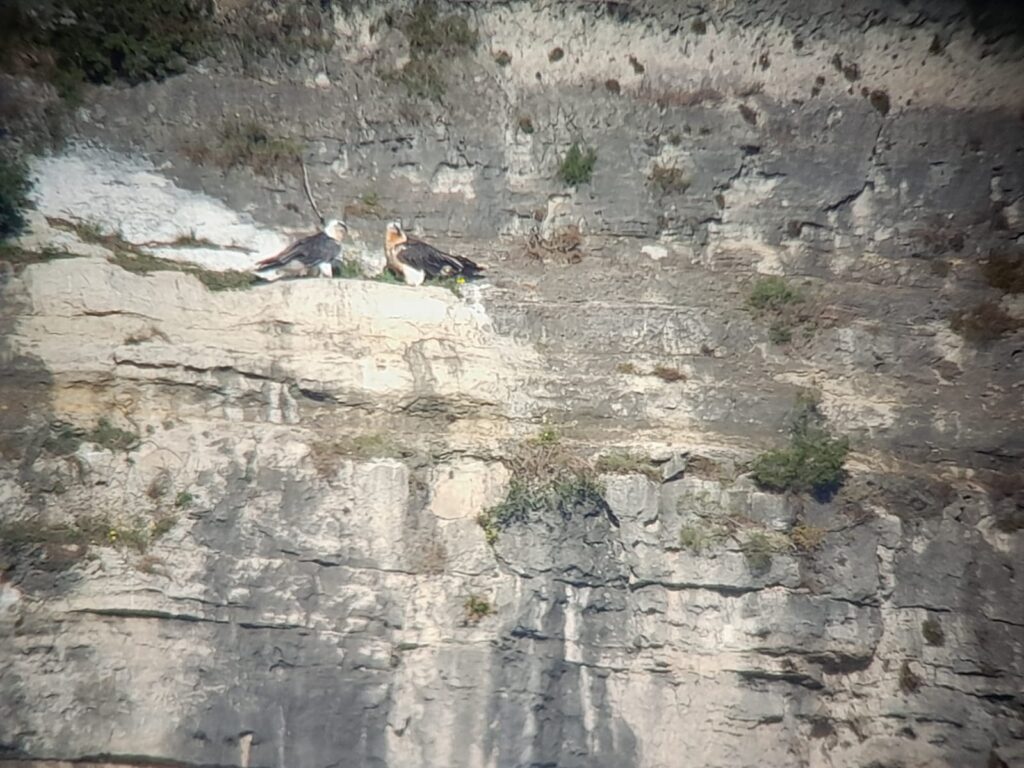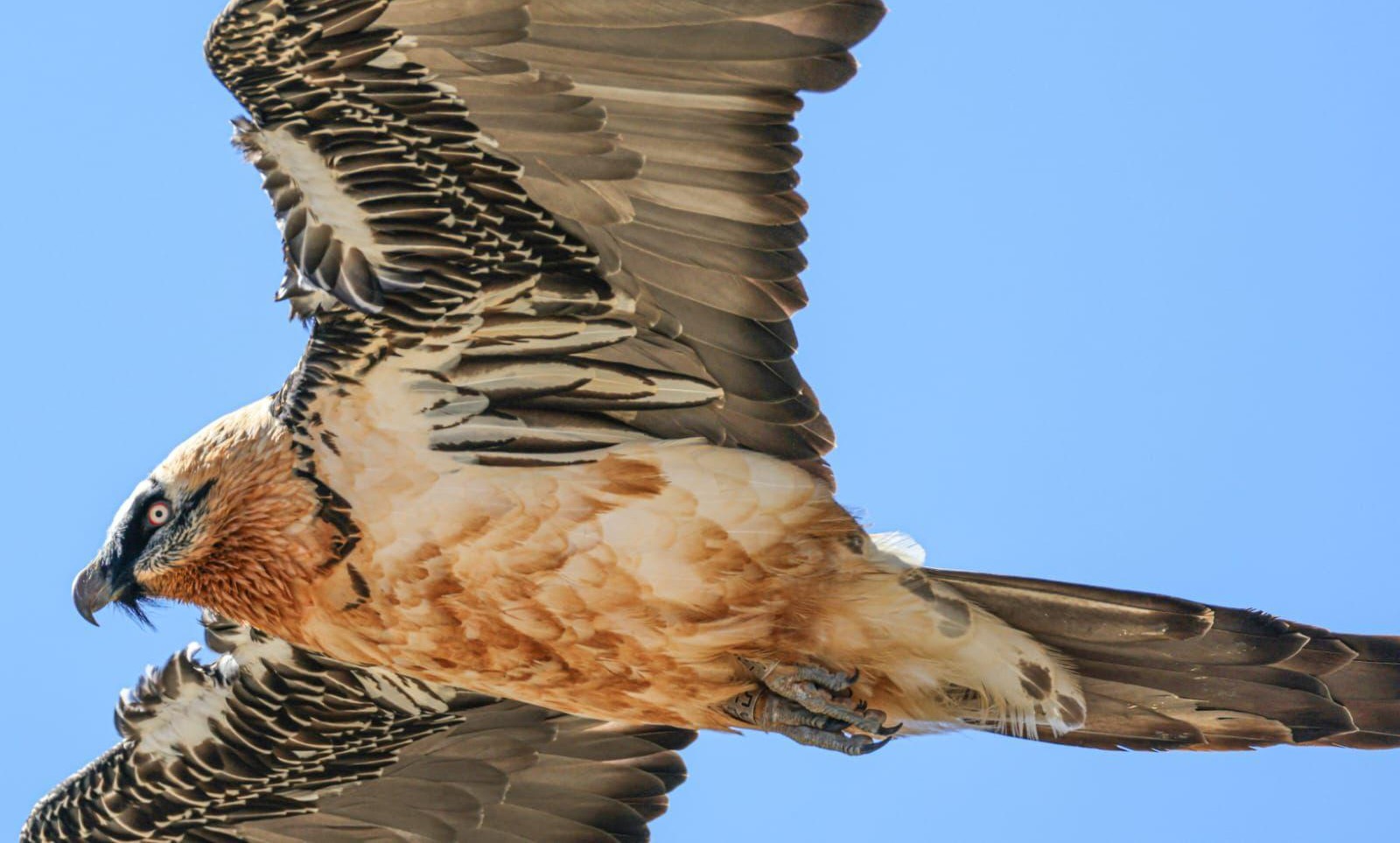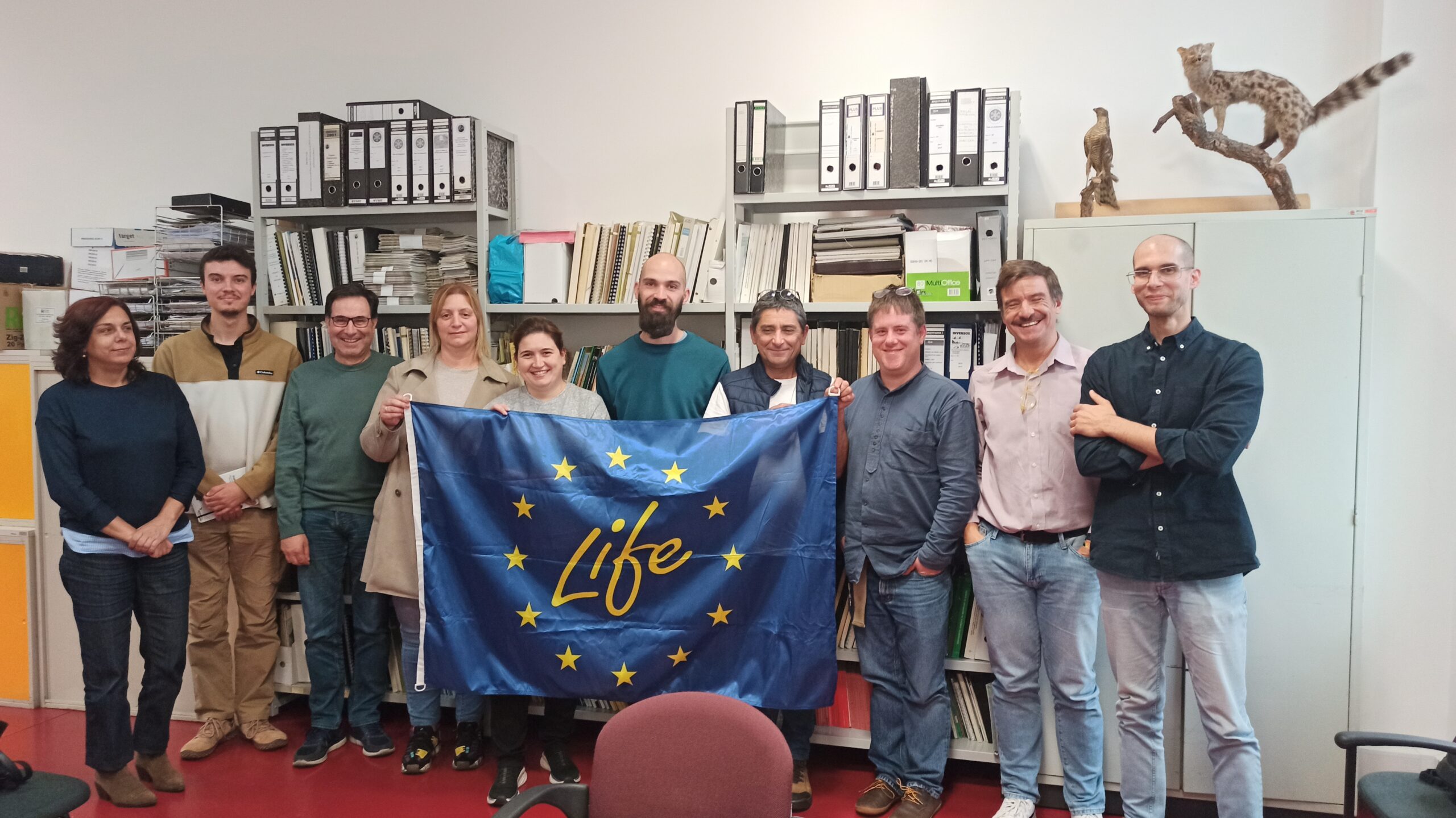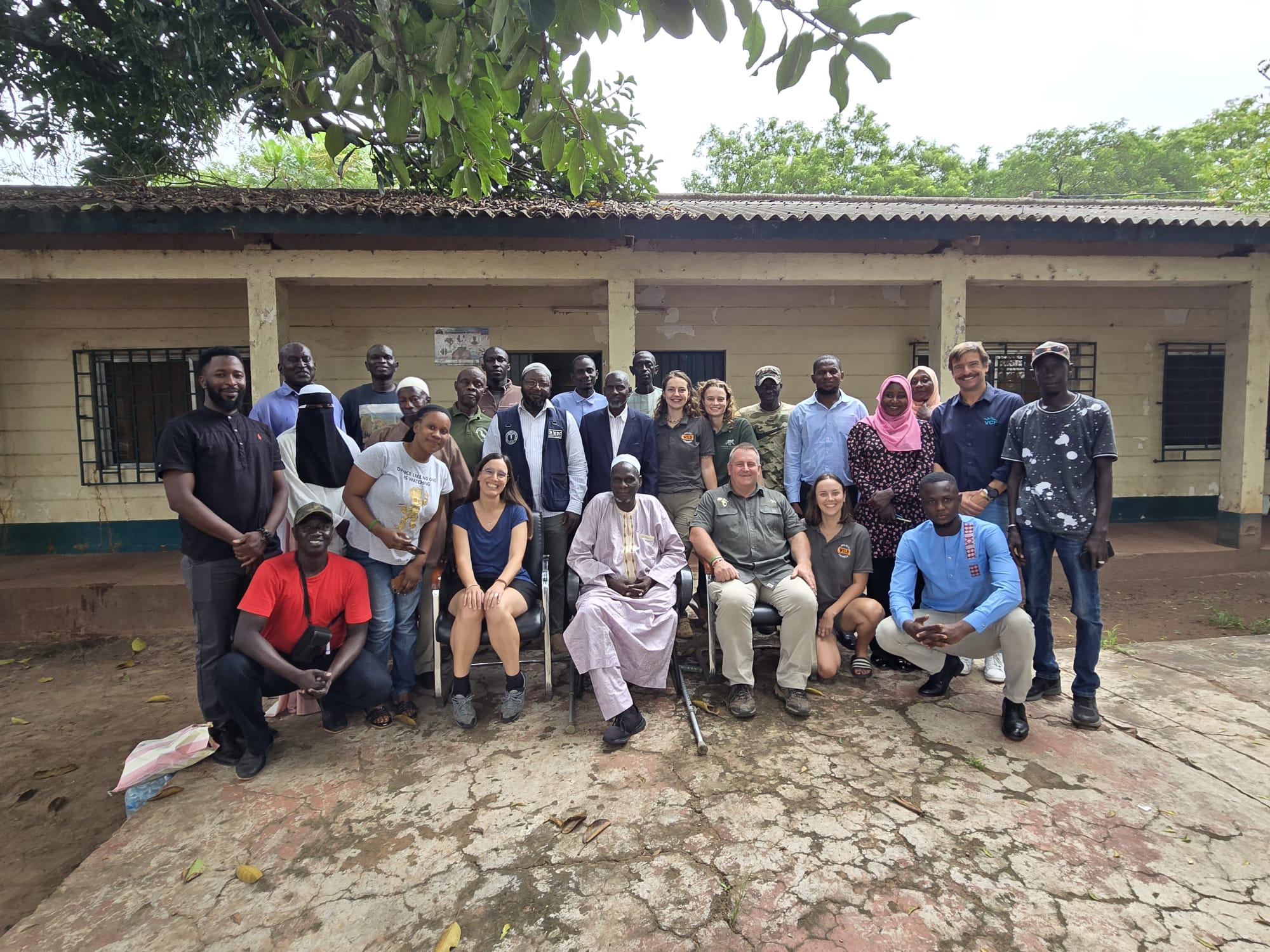The Bearded Vulture reintroduction project in Maestrazgo, Spain continues to progress with encouraging signs from some of its earliest released birds.
Captive-bred Bearded Vultures Amic and Bassi, released in 2018-2019, have settled permanently in the reintroduction area as a bonded male–male pair. They have even been observed mating and nesting.

Meet Amic and Bassi
Amic, a captive-bred male from Guadalentín Specialised Breeding Centre, was among the first Bearded Vultures to return to the Maestrazgo mountains after decades of absence. From the start, Amic has shown remarkable loyalty to the release area in Tinença de Benifassà.

A year later, in 2019, another male, Bassi, joined the project together. Much like Amic, he has remained closely tied to Tinença, only making brief exploratory trips before returning to the release site.
First territorial pair to settle in Maestrazgo
Amic and Bassi formed the first territorial pair to settle in Maestrazgo—an important milestone that arrived earlier than expected for the project. Recent camera-trap footage by Generalitat de Valencia of Amic collecting wool offers a glimpse of the maturing vulture preparing its nest.
Although Amic and Bassi currently form a male–male pair, this is neither unusual nor an obstacle for the species’ recovery. Bearded Vultures are known for flexible social structures that include, male–male pairs, polyandrous trios and even quartets.
As more individuals settle in Maestrazgo, it is expected that Amic and Bassi will eventually find female partners. Their current presence—and their territorial behaviour—is likely to attract new birds to the region.
Returning home to settle
After years of exploring the Iberian Peninsula—especially regions close to Maestrazgo such as the Pyrenees—both males have now returned to the cliffs where they learned to fly. This behaviour, known as philopatry, is the biological principle behind the hacking method. Birds released before they can fly imprint on the release site as their birthplace. Once they reach maturity, they return to defend a territory, search for a partner, and begin the process of breeding.

This development provides two strong confirmations for the reintroduction effort: Maestrazgo offers suitable habitat for territorial, nest-building Bearded Vultures and the hacking release method is working as intended, with birds returning to the area where they were released as juveniles.
Notably, the formation of this first pair has occurred sooner than in other comparable projects, where pair formation typically took around a decade.
We look forward to seeing how the developments of Amic and Bassi continue!
Bearded Vulture to Maestrazgo
The Maestrazgo region of Valencia, Spain, was historically a breeding site for Bearded Vultures, today whilst there is no resident population of the species it is regularly visited by birds from the Andalucian population in southern Spain. The project to reintroduce Bearded Vultures began in 2018 with the aim of establishing a wild breeding population that will bridge the populations in the Pyrenees in the north and Andalusia in the south.
The project is led by the Generalitat of Valencia, in collaboration with the Autonomous Communities from Aragón e Catalonia, the Spanish Ministry of Agriculture, Fish, Food and Environment and the Vulture Conservation Foundation.







